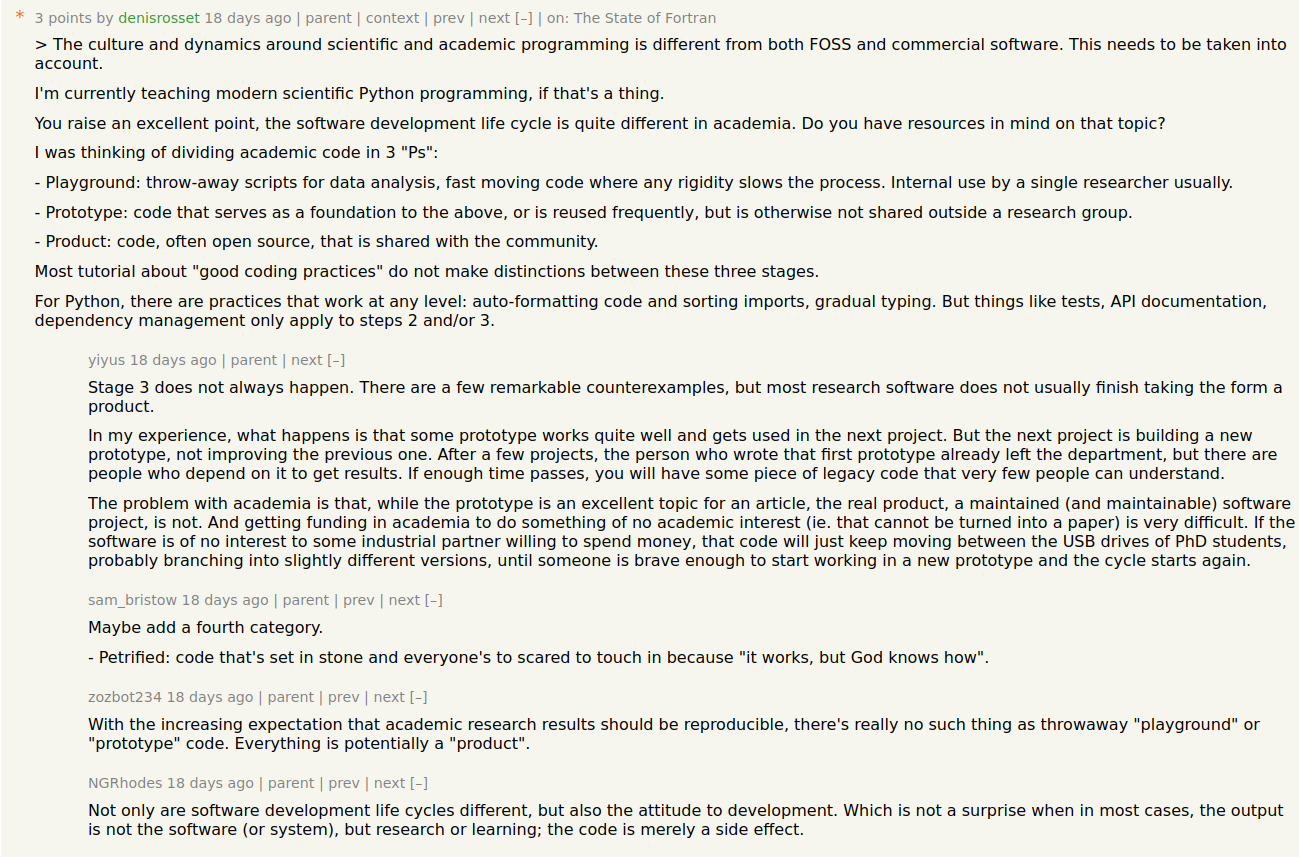Code levels
Contents
Code levels¶
Playground Throw-away scripts for data analysis, fast moving code where any rigidity slows the process. Internal use by a single researcher usually.
Prototype Code that serves as a foundation to the above, or is reused frequently, but is otherwise not widely shared with unknown people.
Product Code, often open source, that is shared with the community.
Petrified

Informally, the advice in this talk is divided in three levels:
Level 1¶
(Playground)
Everything is contained in a single folder, without subdirectories.
Code is a few Python files. Dependencies are managed informally, or through a simple
requirements.txt list. There is no packaging so that the project can be installed using
pip install myproject.
No specific virtual environment is used to developed the project, one often works with a single e.g. Conda environment for all projects.
Documentation is in the form of Jupyter notebooks or Markdown files that are read directly from the GitHub repository web interface.
Level 2¶
(Prototype)
The project is managed, has a configuration file. We recommend Poetry to orchestrate all of this.
There is a clear structure that separates documentation, tests, and the package code.
The code is published to PyPI.
Documentation may be available in the form of a website.
Level 3¶
(Product)
Additional infrastructure is put in place so that nothing bad happens in the future, and so that users can trust that nothing breaks.
Academic projects rarely reach that stage.